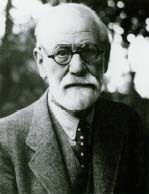Therapy

Therapy is short for the term "psychotherapy." Psychotherapy uses talking, learning feeling, and remembering to help people solve mental emotional and behavioral problems and change their lives for the better.
KEYWORDS
for searching the Internet and other reference sources
Behavior
Cognition
Gestalt
Hypnotherapy
Psychoanalysis
Psychodrama
Psychodynamic processes
Psychology
Psychiatry
Many people believe that therapy is one of the most effective ways to achieve and maintain good mental and behavioral health. Therapy can help people understand, solve, and prevent problems as well as live more comfortably with problems that cannot be solved or prevented. Therapy also can support people during especially stressful times of their lives. In addition, it can teach people skills and strategies for coping with lifelong stresses, and it can make medications and other treatments work more effectively.
Therapy Is About People and Relationships
Therapy most often is provided by mental health professionals who have been trained and licensed to offer counseling. Therapists may include psychiatrists, psychologists, marriage and family therapists, social workers, ministers, and school counselors. People who work with therapists often are called patients or clients.
Therapeutic alliance
Different types of therapists use different methods of therapy to work with different kinds of problems, but all therapeutic methods involve an active partnership and alliance between the therapist and client. To create a safe and trusting alliance, or relationship, therapists follow several basic principles:
- Therapists protect the privacy and confidentiality of the information their clients share with them during therapy sessions.
- Therapeutic settings provide clients with safe environments and safe boundaries. Clients are not judged, disrespected, or intruded upon.
- Therapists strive to inspire confidence, encourage emotional expression, and increase their clients' expectations for success in therapy and in the world outside therapy.
- Therapists encourage self-knowledge and self-awareness in their clients so that clients can learn to manage their own thoughts, feelings, and actions after therapy has ended.
Clients and therapists work together to help the client learn to decrease distress, improve health, and increase quality of life.
Transference
When a patient develops trust in the relationship with a therapist, the therapy setting may become right for transference to occur. Transference represents the "transfer" of the patient's feelings onto the therapist. Complex feelings from childhood experiences and from important relationships can transfer to the therapeutic setting. These may include frustration about not getting the expected love or approval from parents and teachers, fear that parents or loved ones will abandon (leave) us, anger that authority figures (teachers, parents) want us to follow rules, and all aspects of love, hate, pride, shame, disappointment, grief, hope, and affection. Because the therapist is not the parent or loved one who was involved in the original relationship, the therapist and client are able to discuss how those earlier hurts might feel in the safe therapy setting. The client might then learn how to change his or her behaviors in current relationships outside therapy.
Individuals, families, and groups
Therapy also can involve different groups of people. In individual therapy, a client works with a therapist in a one-to-one relationship. This often is referred to as a therapeutic "dyad," from the Greek word that means "two." In group therapy, several people with similar problems work together with one or two therapists. This form of therapy can be particularly helpful for people whose problems tend to occur when they must function in groups or teams at school or work. In family therapy, a married couple or an entire family attends therapy sessions, with individuals working together as a unit to understand and resolve the problems the family is experiencing. The family therapist helps members of the family feel safe as they learn both to express their own emotions and to listen to and understand the emotions of other family members.

Therapeutic Techniques
Therapists use many different approaches to create the trusting partnership that allows people to change their thoughts, feelings, and behaviors. No one method is better than the others, and many therapists use "eclectic" approaches that combine techniques from many different methods.
Psychoanalysis
Psychoanalysis is the original form of "talk therapy." During psychoanalysis, people talk about their dreams, desires, wishes, and fantasies from early childhood through the present day. Feelings or information of which people are unaware are called unconscious, but they still may affect their behavior. By "making the unconscious conscious," people can bring this material into awareness and understand how it may be affecting their daily lives. For example, angry feelings about a parent may be affecting a person's relationship with her boss. Insight and awareness can be used to create change and resolve conflicts. Psychoanalysis is considered a "psychodynamic" therapy because it emphasizes change, growth, and development.
Cognitive behavioral therapy (CBT)
CBT is a form of therapy that helps people learn to understand and change harmful thoughts, habits, and behaviors. It also can help people learn more effective ways to react to mental problems, emotional problems, and stressful situations. For example, people who think negatively about themselves and the world around them can learn to change these pessimistic thought patterns into thoughts that might be more adaptive. CBT often helps people with anxiety disorders, phobias, addictions, attention deficit hyperactivity disorder, and conduct disorders.
Gestalt therapy
Gestalt therapy, based on the German word that means "form" or "pattern," focuses on the entire shape of a person's life: body and mind, habits and beliefs, experiences and actions, home and family, school and friends. This holistic approach to change focuses on making small shifts in body and behavior (for example, chewing food a different way or putting on clothing in a different sequence) that eventually may transform many larger aspects of a person's life. This form of therapy often is associated with the psychologists Frederick "Fritz" Perls (1893-1970) and Paul Goodman (1911-1972).
Play therapy
Play therapy is used with younger children who may not be old enough to put their thoughts and feelings into words. Play therapists use dolls, toy soldiers, building blocks, games, and sand trays that allow children to express their problems in nonverbal ways. By observing the child's actions and choices during play, the therapist gradually is able to understand what the child cannot say, help the child learn to understand and put words to the problems expressed through play, and work out solutions during play that can be used in the outside world.
Art, music, dance, and pet therapy
These forms of therapy work in much the same way as play therapy. They use sensory experiences, such as drawing, dancing, drumming, or petting dogs and cats, instead of talk therapy or as a supplement to it.
Hypnotherapy
Hypnotherapy, also known as medical hypnosis, uses an altered state of consciousness called a trance that allows the client to relax, concentrate, listen to the therapist's suggestions, and learn new behaviors. Hypnotherapy is a recognized form of treatment and is not the same as "stage hypnosis," where the hypnotist "makes" the volunteer act "like a chicken." Researchers do not yet understand exactly how hypnosis influences the brain, but they have used it successfully to help people stop smoking, manage eating disorders, and control chronic pain.
Eye movement desensitization and reprocessing (EMDR)
EMDR is a newer approach that combines talk therapy with a series of eye movements. The eye movements are believed to "reprogram" the brain's information processing systems. EMDR is used most often with people who have had a severe emotional experience (for example, witnessing a car accident) and need to "unlearn" the stress responses created by past trauma.
Psychoanalysis and Psychodynamic Therapy
Psychoanalysis and psychodynamic therapy follow a set of psychological theories that emphasize change, growth, and development. Psychoanalysts believe that change and development are achieved by understanding the internal motivations, drives, forces, and impulses that determine behavior.

Talk therapy
The specific focus of psychoanalysis is unconscious mental activity—the experiences and feelings that people are unaware of but may still influence them. People in psychoanalysis are encouraged to talk about their dreams, wishes, desires, and fantasies so that the unconscious forces that shape and control their behavior can be brought into awareness and be understood. This form of therapy allows people to understand emotional conflicts, disappointments, and traumas that they experienced during childhood and to reconstruct them in the present with the therapist's guidance.
Change
As with other forms of therapy, change is the goal of psychoanalysis. Change can help ease emotional pain, redirect troublesome behaviors, and improve relationships with the important people in an individual's life. The techniques that psychoanalysts use to create change include:
- Insight: This refers to awareness and understanding. Often it is described as "making the unconscious conscious."
- Affective expression: This involves expressing feelings, conflicts, and impulses. It sometimes is referred to as "catharsis." Developing an observing ego: This allows people to monitor and control their own emotions and behaviors.
- Transference: This allows people to "transfer" leftover feelings from other relationships to the therapist, who helps them deal more effectively with difficult feelings.
- Conflict resolution: This allows people to create newer and more helpful patterns for dealing with old and new stresses and problems.
Analytic psychology and psychotherapy
Sigmund Freud (1856-1939) was responsible for most of the original concepts of psychoanalysis. Alfred Adler (1887-1937) shifted its focus from sexual issues to issues of power and authority, introducing the term "inferiority complex." Carl Gustav Jung (1875-1961) expanded analytic psychology to include the "collective unconscious" of entire populations as expressed in their myths, fairy tales, metaphors, and artistic creations. Freud's daughter, Anna Freud (1895-1982), and one of Freud's students, Melanie Klein (1882-1960), expanded Freud's theories and techniques to include drawing and playing, which made analysis more useful in the treatment of young children. Even though therapists disagree on how useful Freud's theories are today, most modern therapists agree that the basis of all forms of psychotherapy originated with the work of Dr. Sigmund Freud.
Sigmund Freud and the Unconscious Mind
Sigmund Freud (1856-1939), a doctor of neurology, is considered to be the founder of the modern science of psychiatry. Freud developed the technique of psychoanalysis and introduced many important concepts about the human mind and human behavior.
Freud's theory described the human mind as having three parts, which he called the id, ego, and superego. Freud thought this structure provided the underlying organization for human experience, with each part of the psychic structure performing specific functions:
- The id exists from birth and controls all the basic drives that motivate people to find pleasure and seek satisfaction. Many of these drives are unconscious, meaning that they occur outside the awareness of the individual.
- The superego maintains moral standards, conscience, goals, and ideals. The superego controls feelings such as self-esteem and guilt.
- The ego is the part of the mind that balances the drives of the id and the controls of the superego. The ego represents a person's sense of self and is the part of the mind that organizes, directs, and synthesizes the personality.
According to Freud's theory, all three parts of the mind function together, with the ego acting as a brake on both the id and the superego, keeping them functioning at a healthy balance. Freud believed this balance could be achieved through a therapeutic process that he called psychoanalysis.
Freud introduced many other important concepts that are used today to understand how the mind works, including unconscious motivation, transference, and the Oedipus complex. Some of his best known concepts include:
- Defense mechanisms: These are emotional protectors that help the ego or self defend against overwhelming ideas or harmful thoughts.
- Denial: This is a defense mechanism that helps people refuse to believe thoughts or feelings that are intolerable.
- Repression: This is a defense mechanism that helps people forget events that are too painful to remember.
- Libido and psychosexual development: Freud believed that sexuality begins to develop at birth and that children go through phases he called oral, anal, and genital even before they reach puberty.
- Jokes and "Freudian slips": Freud believed that unconscious thoughts sometimes slipped into conversation as jokes or "accidental" word combinations.
Many of Freud's ideas and innovations are used in everyday language and communication today. There even is a comic strip called The Wizard of Id. For many people, Freud remains synonymous with the concept of psychotherapy.
Cognitive Behavioral Therapy (CBT)
Rather than focusing on the unconscious conflicts that are important in psychoanalysis, CBT uses the way people think and interpret their experiences to understand why they sometimes react to stressful situations in harmful ways. CBT helps people understand their troublesome thoughts and behaviors, learn more helpful ways to behave, and practice the new behaviors until they feel comfortable substituting new thought patterns and new behaviors.
Thoughts, beliefs, and assumptions
Cognitive activities keep our brains busy most of the time. We think about ourselves, our friends, our families, our everyday activities, and our futures. Cognitions include core beliefs, automatic thoughts and assumptions, self-talk, self-images, and even behavioral choices, since most of us think before we act. Sometimes, however, our beliefs, assumptions, and thoughts influence or motivate feelings that create behaviors we want to change. "I always mess up when I try something new," for example, is a thought or cognition that may lead to fear of change, fear of failure, and not taking action when needed. Working with the progression from thoughts to feelings to behaviors, CBT therapists help people learn to change their assumptions, which leads to changes both in emotional reactions and in behaviors. "Sometimes I succeed when I try something new" and "everyone makes mistakes when they try something new" are different cognitions that can lead to new behaviors.

Behaviors
CBT therapists use therapeutic techniques to help people first identify the thoughts and behaviors they want to change, then identify the factors and situations within their environment that create or maintain the targeted thoughts and behaviors. Once people have done this, the next step is to learn new methods for thinking and acting whenever they encounter the situations that trigger the behaviors they want

- Assertiveness training: learning how to "stick up" for ourselves and practicing it with the therapist until we can do it on our own.
- Desensitization training: gradually learning how to deal with situations that trigger fear and anxiety by rehearsing similar situations and learning new response patterns in the safety and privacy of the therapist's office under the therapist's supervision.
- Token economy: using rewards, such as extra play time or new videos, to strengthen and reinforce new behaviors. The more difficult the new behavior, the more tokens the client is likely to receive from the therapist.
Often, a CBT therapist will choose a combination of techniques, but all of them will focus on step-by-step change in a safe and private environment with a mental health professional who inspires confidence, encourages emotional expression, and has patience while the client learns to succeed.
Marriage and Family Therapy
In marriage and family therapy, the "client" is a married couple or an entire family. The couple or the family is thought of as a complete system in which each member has influence on the system as well as on the other individual members. At the beginning of the process, one member of the family is the patient (often called the "identified patient") who "brings" the family to therapy. However, during the process of therapy, the family becomes the patient and learns how to improve all of the interactions that affect relationships among members (the system).
Some of the techniques that family therapists use include:
- using family trees (genograms) to help families understand how the family structure works
- encouraging each member of the family to share his or her thoughts and feelings without fearing the reactions of other family members
- training each member of the family to listen to the thoughts and feelings of other family members in a nondefensive manner, without blaming or feeling threatened
- role-playing with the family so that each member learns to understand the family from all other points of view
- role-playing with the family to model new patterns of behavior that involve sharing, communicating, disciplining, caregiving, and adjusting to illnesses or changes in the family structure
- assigning family homework that gives the family practice in using the new skills they have learned during their therapy sessions
Pavlov, Watson, and Skinner
Cognitive behavioral therapy was developed from the science of behaviorism, which originated with the work of the Russian physiologist Ivan Pavlov (1849-1936).
Pavlov's Dogs
Pavlov used dogs to study the digestive system, focusing on the salivary glands, pancreas, and liver. During his research, Pavlov noticed that the dogs began to salivate whenever they heard a bell. He remembered that the bell always rang before the dogs were fed, and he realized that the bell had become a stimulus for the dogs' digestive systems, because the dogs had linked the bell to food. This discovery led to the development of the science of classical conditioning (also called Pavlovian conditioning), in which "unconditioned" (natural) stimuli are deliberately linked to other events, turning them into "conditioned" stimuli. Pavlov was awarded the Nobel Prize for medicine or physiology in 1904 for his work on the digestive system in dogs.
John Watson
John Watson (1878—1958) often is referred to as the founder of behaviorism. Watson's work focused on the "response" aspect of classical conditioning. Watson knew from Pavlov's work that conditioned stimuli (such as a bell ringing before feeding) provoked conditioned responses (such as dogs salivating when they heard a bell). But Watson also observed that stimuli similar to the conditioned stimulus could lead to similar conditioned responses. For example, Watson observed that a boy afraid of rabbits might also be afraid of white furry creatures like guinea pigs. This observation was particularly important in the study of phobias. One approach to treating phobias involves slowly approaching the feared object. The further away, the less the fear. Gradually the person becomes used to being close to the object of their phobia.
B. F. Skinner
B. F. Skinner (1904-1990) is the psychologist who elaborated on Watson's theories and developed a system for behavior change called "operant conditioning." This system used rewards ("positive reinforcement") and punishments to increase or decrease specific behaviors. Skinner helped develop much of our understanding about behavior, and his theories formed the foundation of modern behavioral therapy, the forerunner of CBT. The token economy technique in CBT relies on Skinner's theories of operant conditioning.
Family therapy can be especially effective for families during periods of stressful change or when families are affected by abuse, addictions, or chronic illnesses.
Mumrray Bowen and
the Family System
In the late 1950s, a Menninger Clinic psychiatrist named Murray Bowen noticed several things in his work with people who had mental illnesses:
- Sometimes hospitalized patients with mental illnesses got worse after visits from their families.
- sometimes symptoms of mental illness improved in one member of a family but got worse in another member of the same family at the same time.
- Sometimes parents seemed to resist change and improvement in their children with mental illnesses.
Dr. Bowen concluded that an entire family could be responsible for whether an individual family member recovered from illness or got worse. Based on his observations, Dr. Bowen developed methods of working with the entire family system in therapy. While for most therapists the individual is the patient, for family therapists the family is the patient.
Choosing a Therapist
With so many different forms of therapy, how is it possible to choose the right therapist? In fact, most people rely on referrals from a family doctor, school counselor, hospital social worker, or trusted friend who has been helped by a therapist and understands the complexities of the process. Because feelings of safety, trust, privacy, and confidence in the therapist are such key aspects of healing, it is important to discuss any doubts, fears, and dislikes frankly with one's therapist. If a person feels he or she is not working well with a therapist, it is reasonable to consider changing to a different therapist. But because therapy is about improving relationships, most often, speaking up about one's doubts will help the therapist adjust his or her behaviors and techniques to make the therapeutic process even more effective.
See also
Emotions
Families
Hypnosis
Medications
Phobias
Resources
Organizations
American Academy of Child and Adolescent Psychiatry, 3615 Wisconsin
Avenue Northwest, Washington, DC 20016. This professional organization
has a
Facts for Families
link at its website. Its
Glossary of Symptoms
and
Mental Illnesses Affecting Teenagers
and its fact sheet
Questions and Answers About Child and Adolescent Psychiatry
explain many different aspects of psychiatric illness, evaluation, and
treatment.
Telephone 800-333-7636
http://www.aacap.org
American Psychiatric Association, 1400 K Street Northwest, Washington,
DC 20005. This professional association publishes a series of pamphlets
and fact sheets that describe psychiatric illnesses and treatments. Its
fact sheets
Psychotherapy
and
Psychiatric Medications
and its pamphlet series
Let's Talk About Facts
can help people understand the stigma sometimes attached to mental
illness and psychiatric treatment.
Telephone 888-357-7924
http://www.psych.org
American Psychological Association, 750 First Street Northeast,
Washington, DC 20002. This professional association publishes books,
brochures, and fact sheets. It provides referrals to local
psychologists, and its website includes a good search engine and a
KidsPsych
feature.
Telephone 800-374-2721
http://www.apa.org
U.S. National Institute of Mental Health, 6001 Executive Boulevard, Room
8184, MSC 9663, Bethesda, MD 20892. This division of the National
Institutes of Health provides current and reliable information about
psychotherapy for the public and for professionals.
Telephone 301-443-4513
http://www.nimh.nih.gov
Comment about this article, ask questions, or add new information about this topic: